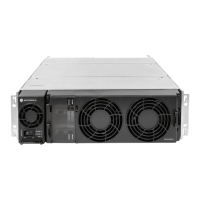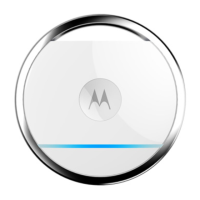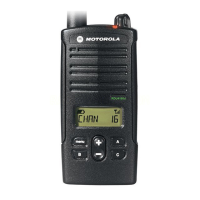MTR3000 Station Control Module: Functional Theory of Operation 5-7
5.2.6 Ethernet Interface
Since OMAP1710 does not support a direct Ethernet interface, a bridge device is needed to support
Ethernet on the SCM. The bridge device is a high performance hi-speed USB 2.0 to 10/100 Ethernet
controller. The device contains an integrated 10/100 Ethernet PHY, USB PHY, Hi-Speed USB 2.0
device controller, 10/100 Ethernet MAC, TAP controller, EEPROM controller and a FIFO controller
with a total of 30 KBytes of internal packet buffering. The following is a list for functionality that the
Ethernet Interface provides:
• Fully Compliant with IEEE 802.3 and 802.3u Compatible Ethernet Controller
• 10Base-T and 100Base-Tx support
• Integrated Media Access Control (MAC) and PHYsical (PHY)
• Supports one 10BT port with automatic polarity detection and correction
• Supports full and half duplex mode and flow control
• Universal Serial Bus (USB) and Joint Test Action Group (JTAG) parameters
5.2.7 Backplane Interface Board
The connector that connects the controller to the backplane interface board is a right angle, 96-Pin
Connector. It provides connectivity between the MTR3000 controller and other station FRU, such as
the Wireline card, the AUXIO card as well as, the third party equipment.
5.2.8 Exciter
The connector used to connect the controller to the Exciter and Receiver is a dual row, right angle,
early entry receptacle, without flange, 30-Pin Connector. It provides 16.8 MHz reference clock,
14.2V, 10V and 8V supply voltage, SPI, Trident SSI and other digital handshake signals with the
Exciter.
5.2.9 Receiver
The connector used to connect the controller to the Exciter and Receiver is a dual row, right angle,
early entry receptacle, without flange, 30-Pin Connector. It provides 16.8 MHz reference clock,
14.2V, 10V and 8V supply voltage, SPI, Abacus SPI/SSI, Trident SPI and other digital handshake
signals with the Receiver.
Note
When using third party controllers, refer to "Appendix E" for CPS configuration in
conjunction with the selection of the correct Tx Audio paths to prevent a double pre-
emphasis.

